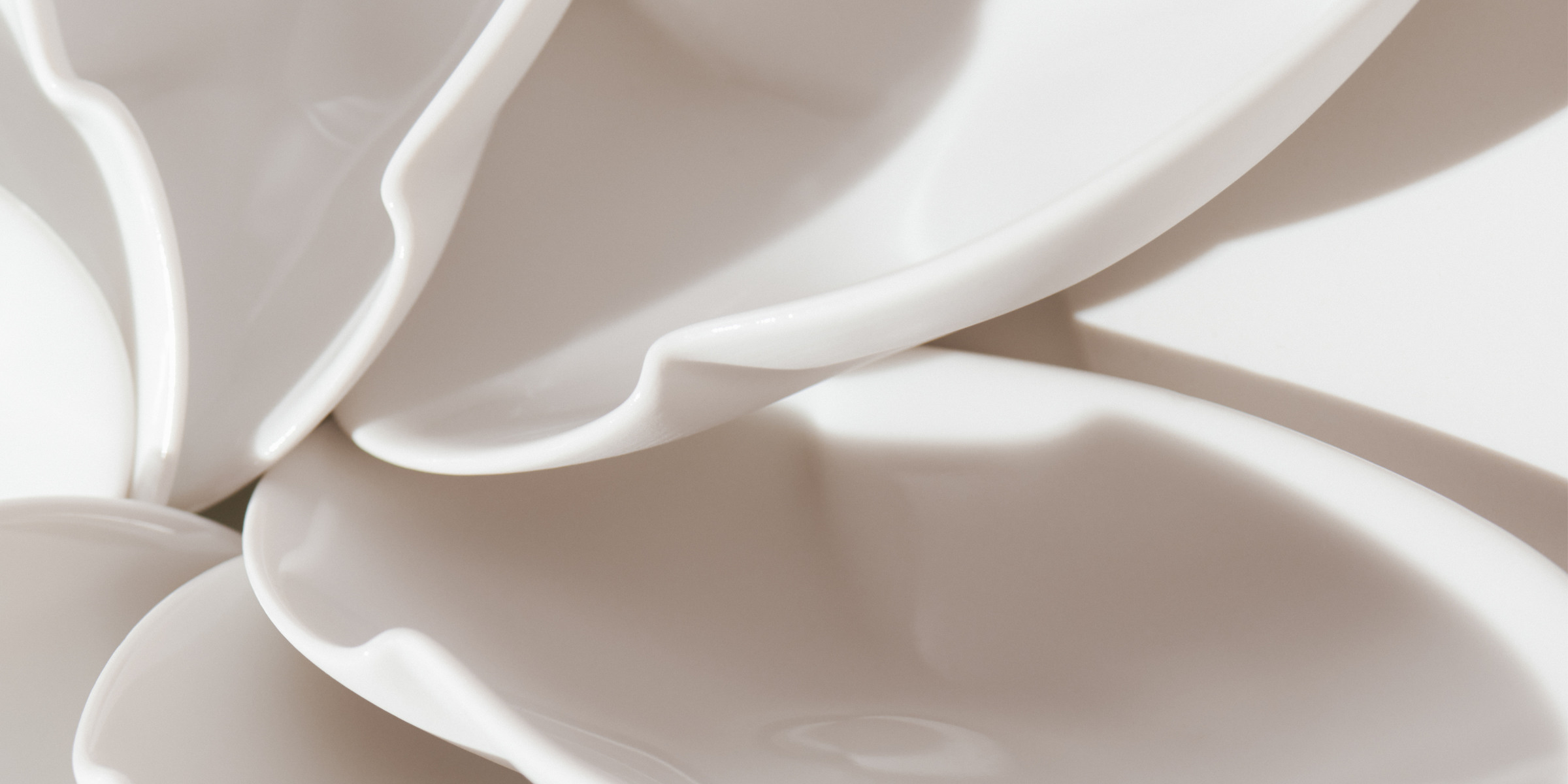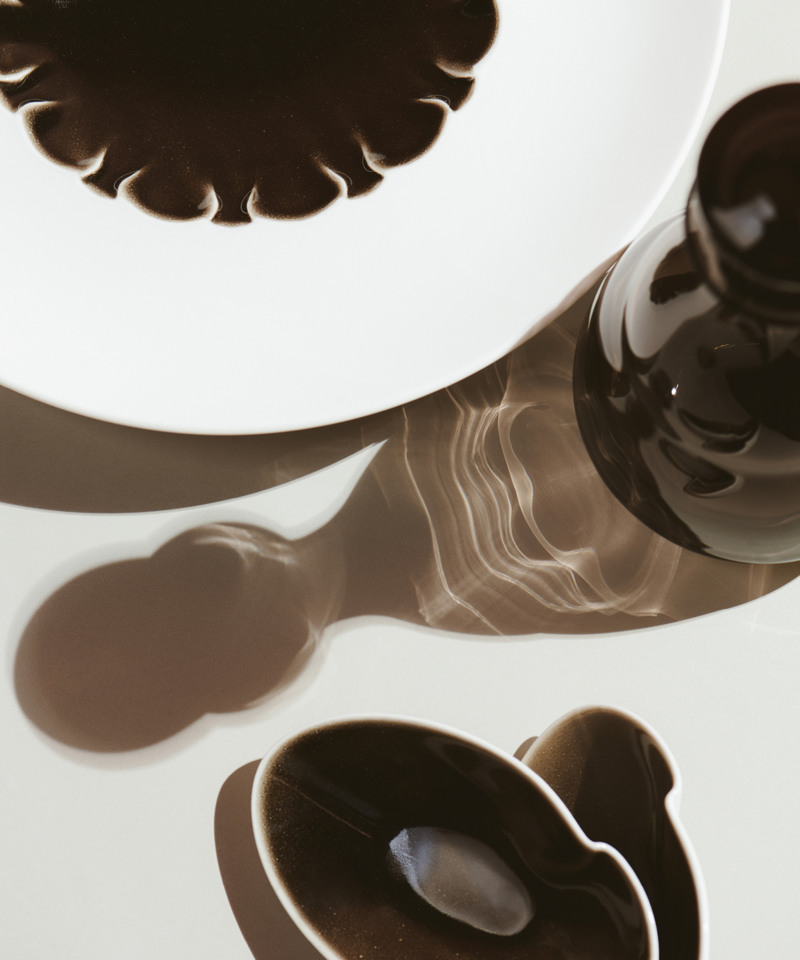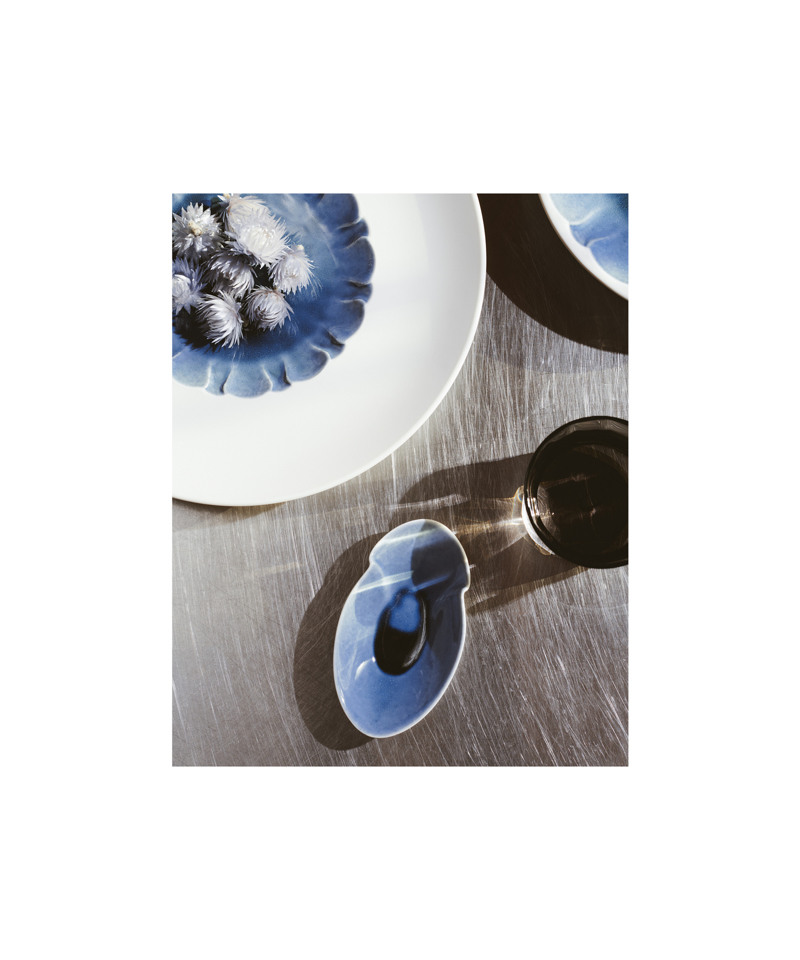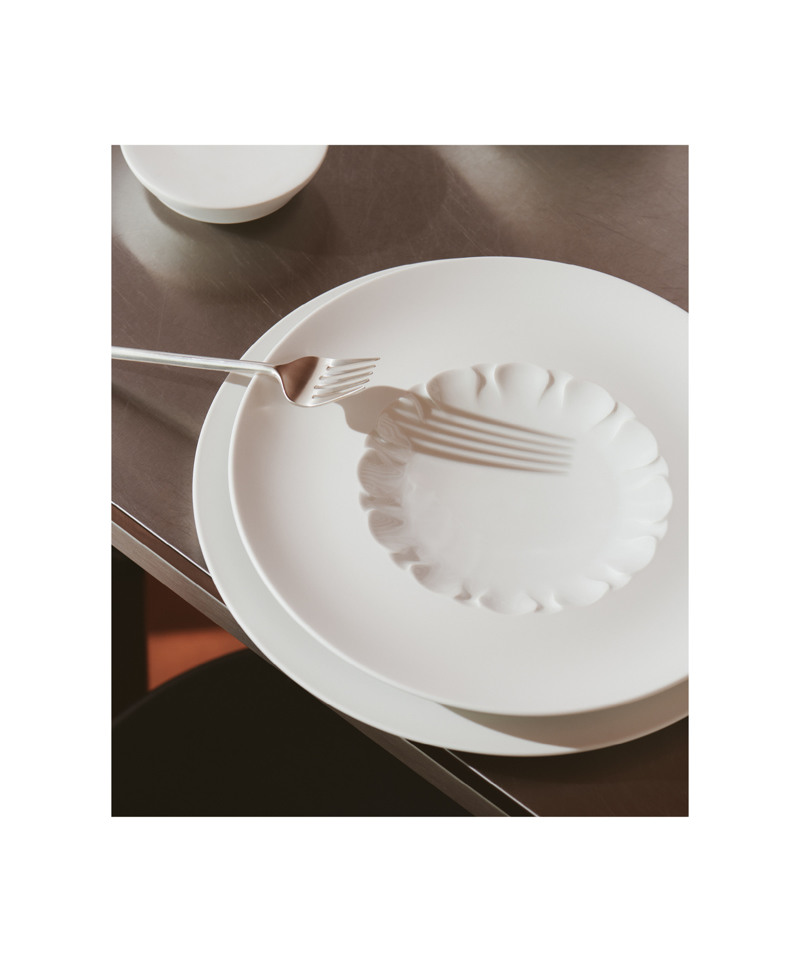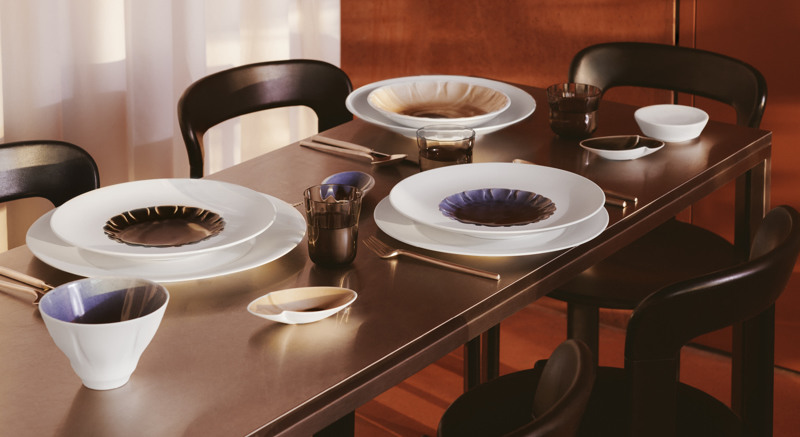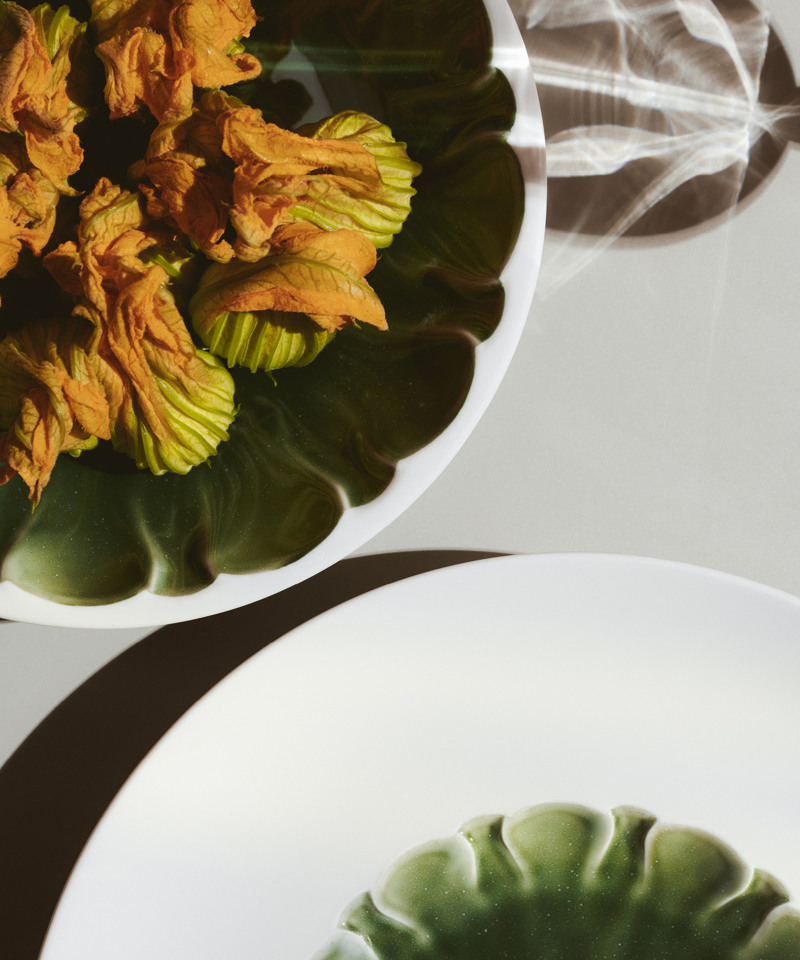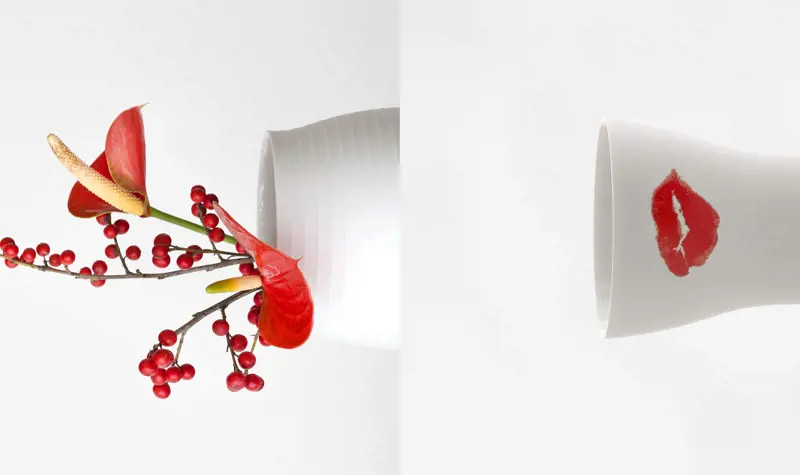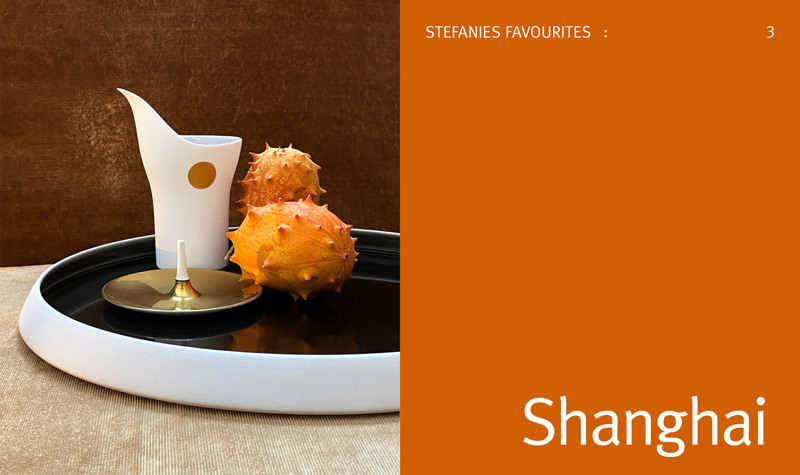EVOLUTION | The emergence of a new form
With EVOLUTION, porcelain designer Stefanie Hering redesigns the form itself: the latest collection from her manufactory Hering Berlin breaks with the traditional shape of plates, bowls and dishes and inscribes them with organic structures. These are reminiscent of calyxes, sprawling mushrooms or shells, depending on the interpretation.
Shop 'Evolution'
The decision for this completely new approach to service design was inspired by three-star chef Christian Jürgens, with whom Hering has worked closely for many years. Jürgens asked the table culture expert for a coupe plate with a larger inner surface. A challenge: because, as the designer and trained master ceramist explains, “it would be too simple to just enlarge the inner surface or make the whole plate bigger. Such an object needs its own line.”
The result is nothing less than a reinvention of the plate: instead of a rounding that merges with an edge into the edge of the plate, Hering modelled this transition zone with narrower and wider depressions reminiscent of petals. It took a year of product development before this basic idea was condensed into a feasible design concept that could only be realised through pure manual craftsmenship.
Stefanie Hering has so far designed a total of four objects, each in white and with four glaze colours, in this unusual form and décor: In addition to the coupe plate, there is a shallow bowl in which the ribbed structure extends right up to the rim of the vessel, a bowl with a plastically shaped exterior that feels like a hand caress and a small bowl in the shape of a biomorphic oval.
Even in the pure white version, the EVOLUTION elements with their elegant interplay between the velvety, bisque porcelain rim and the shimmering glazed inner surface appear harmonious and lively at the same time. However, the innovative design unfolds its full sophistication when the inner surface is covered with one of the four mineral colour glazes developed by Stefanie Hering. Then the lighter ribs of the plate wall stand out not only plastically but also visually against the background in bottle green, blue, deep black or sand gold. The effort required to achieve this effect is immense and can only be achieved by hand. Otherwise, the colour could not be applied in such a way that it would withdraw from the particularly raised areas during the double glaze firing.
Both in the pure white and in the coloured glazed version, these pieces can be excellently combined with other Hering Berlin collections, whether because the organic structures fit well with the style of various decors by Stefanie Hering or because the colours of the glazed sections find equivalents in the glazed surfaces of other series.
At the table, at any rate, the possible uses of EVOLUTION are immense:
“There is something about EVOLUTION that is very close to culinary,” says Stefanie Hering. “This structure, although striking, focuses the eye extremely on what is in the middle.” Accordingly, she recommends dishes and foods that themselves have an idiosyncratic shape and resonate in the structures of the plates and bowls - artichokes or bizarrely shaped mushrooms, for example, oysters or mussels. There are no limits to the variety of interpretations.
Shop 'Evolution'
Photographer – Volker Conradus
Location – Lok6
Art Direction – Hering Berlin: Maximillian Bellinghausen
Read next
Mother's Day | Father's Day
Choosing a truly appropriate gift for Mother’s Day and Father’s Day is one of the biggest challenges. The oversupply of quickly forgotten, run-of-the-mill gifts is too immense. In contrast, small gifts from a manufactory like Hering Berlin symbolise lasting value and a sense of style. Because as different as all the porcelain presents from the pen of Stefanie Hering may be - what they all have in common is that they are unique. Read more...
Shanghai
The meeting of East and West
The pulsating mega-metropolis at the mouth of the Yangtze River, from where the first Chinese porcelains once found their way to Europe, inspired Stefanie Hering to create another table setting in her “Stefanie’s Favourites” series. Read more...





